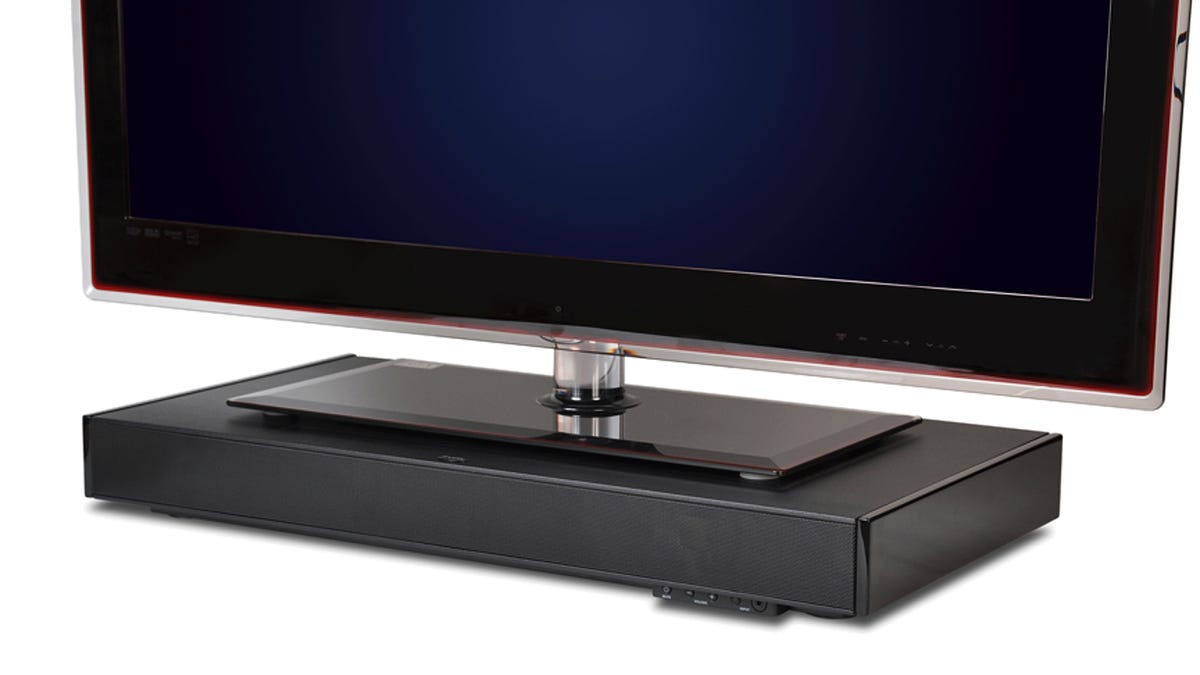Wave bye-bye to TV sound base speakers, long live the sound bar
The Audiophiliac ponders the demise of the sound base, and the future of sound bars.

Before we get to sound base and sound bar speaker systems, let's back up for a short history lesson. In the early 2000s packaged home-theater-in-a-box (HTiB) systems were a really big deal because they offered a simplified solution to the complexities of receiver, speaker and subwoofer matching for dazed and confused consumers. True, some HTiBs were awful, but most were decent, and a few were actually pretty nice, especially for the money. The big downside to HTiBs were the wires; there were lots of wires for the five or more speakers, and the subwoofer.
Next came skinny sound bars that were either wall-mounted just under the TV, or sat on a shelf in front of the TV, and eliminated the maze of wires that was part of setting up HTiBs. It wasn't long before 'bars put an end to the market for 5.1-channel HTiBs.
The problems with slender 'bars were that they didn't make much bass (how could they?), the cabinets were too small and there was no room for large woofers. So more and more sound bars started to come equipped with separate subwoofers to supply the missing bass, but now there were two boxes (the sound bar and the sub) instead of one.
That was an issue for some buyers; they wanted a single speaker that produced adequate bass. The sound base was the solution to that problem. The sound base that doubled as a platform "stand" for a display had room for a large woofer (or two) on the cabinet's bottom panel, but the sound base maintained the low profile of a sound bar. We favorably reviewed a number of sound bases here on CNET.
Things looked rosy for a while, then a few years ago there were reports of large displays on sound bases "tipping over," falling off the bases and causing injuries and even deaths. So we saw a steep decline in new sound base models. The end of 'bases was in sight, so the market swung back to sound bars, mostly with wireless subwoofers. Check out the best sound bars of 2016 list for our current recommendations.
A Yamaha sound base speaker system
Then again, I'd love to see 5.1-channel HTiBs make a comeback; they produced bona fide surround sound, a feat no sound bar (or 'base) can fully match. Of course, if you never lived with 5.1-channel surround, you literally won't know what you're missing. Or maybe you did, but it was a long time ago so real surround sound is a distant memory, I understand your resistance to the hassles of setting up five speakers and a sub, and running all those wires. Yeah sure, you might be considering a wireless 5.1-channel system, but there are a couple of downsides to wireless systems. First, they all have AC power cords, aka, wires, coming out of their backsides, so each of the five speakers and the sub have to be plugged into a wall outlet! Next, you'll pay a premium for wireless 5.1-channel sound, and the sound won't be nearly as good as what you get with a system with an AV receiver, five wired speakers and a wired subwoofer.
For example, you could get the terrific Energy Take Five Classic 5.1-channel satellite/subwoofer system for $320, and the mighty Denon AVR S500BT receiver for $219. That little system will deliver true surround sound and clobber any sound base or sound bar we've tested, even ones that sell for more than double the Energy/Denon system's total price!
Still, for most folks sound bars are the easiest solution, and there are plenty of great models to choose from.

